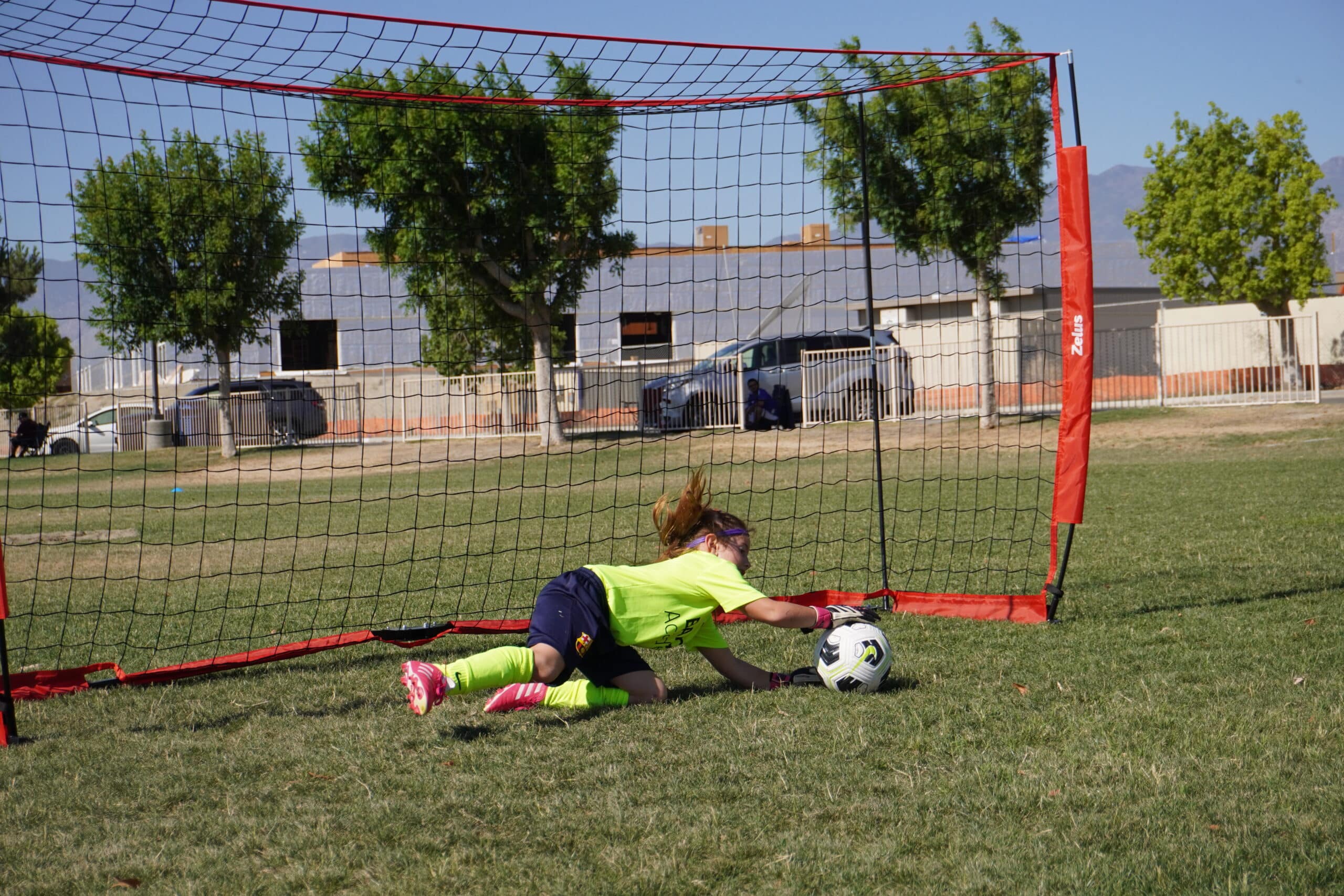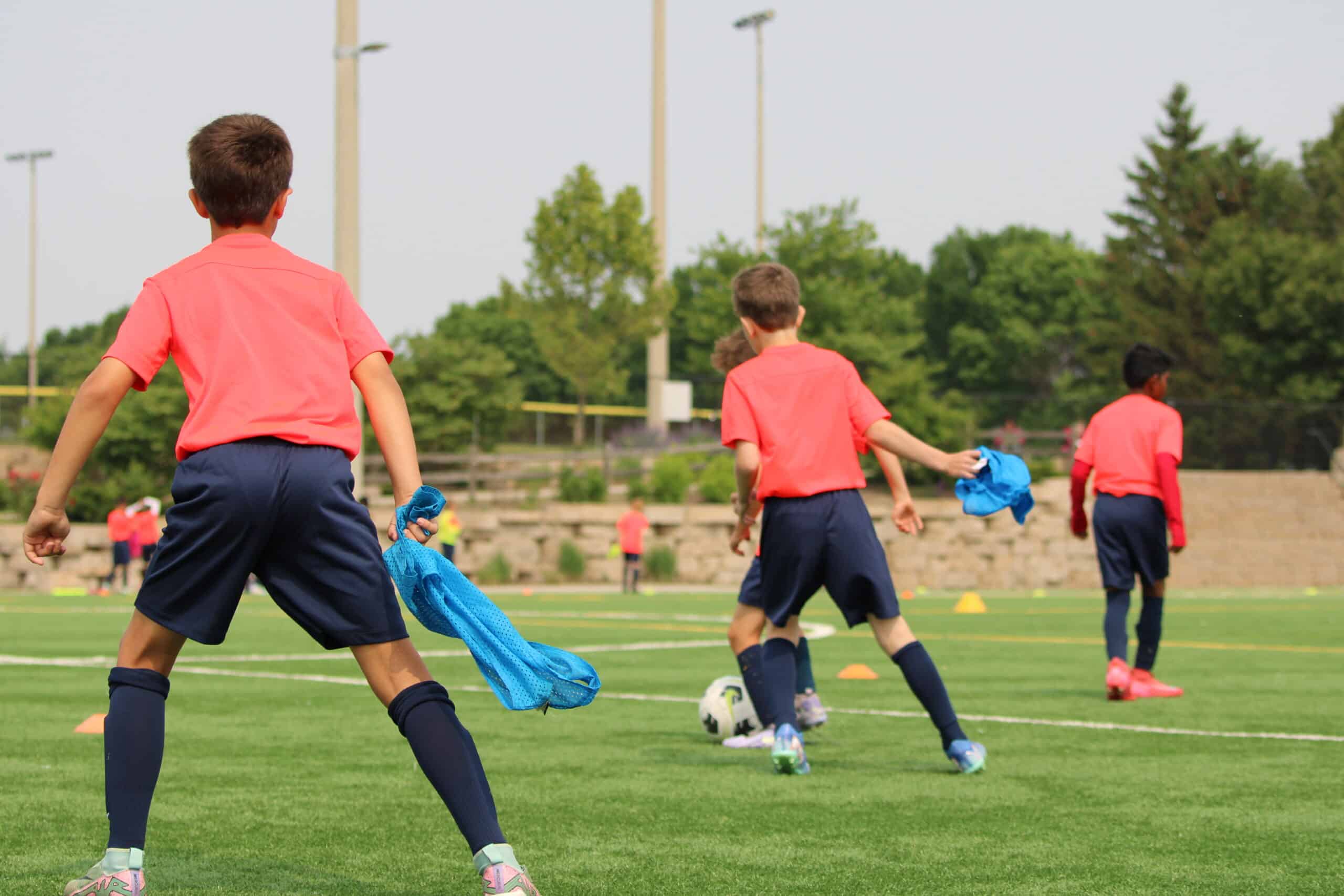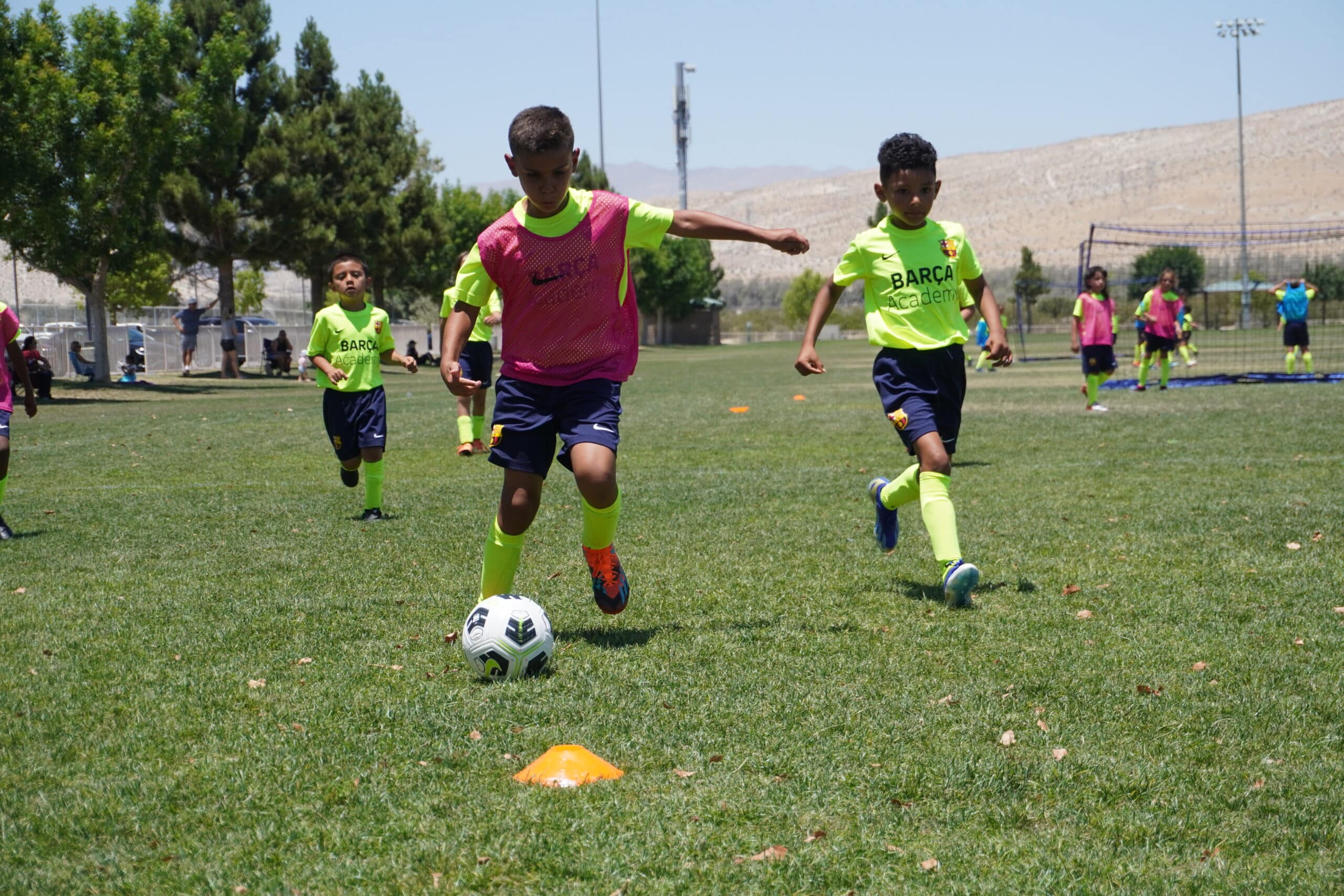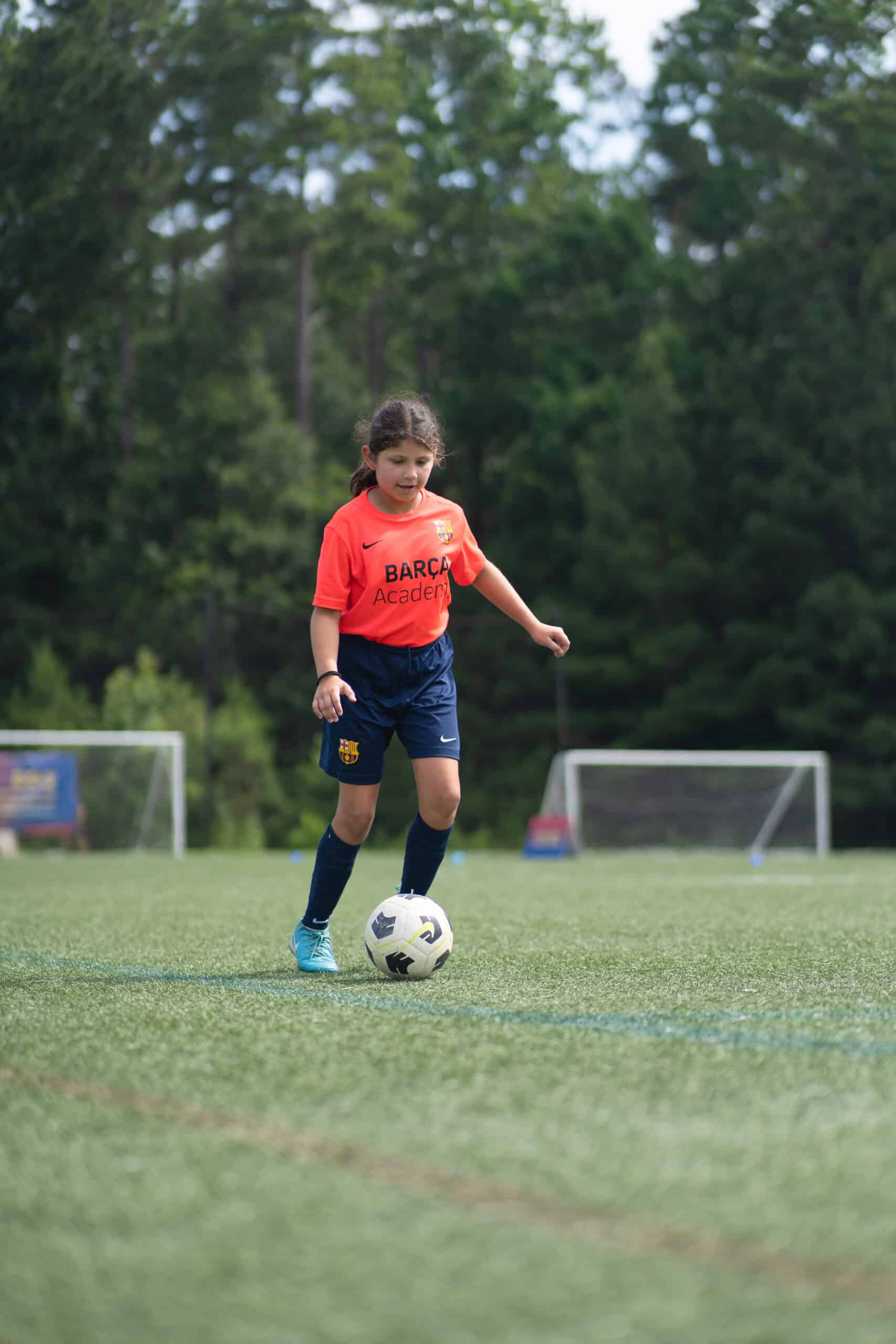Have you ever woken up the day after a match feeling more sore than expected? Muscles you didn’t even realize you were using ache with every step, and even getting out of bed feels like a workout on its own. It’s a common experience—no matter how well the game went, the physical and mental toll can linger long after the final whistle. And if you don’t take the right steps to help your body heal, that fatigue can build up, affecting your performance in training, future games, and even increasing your risk of injury. That’s why it’s crucial to know how to recover after a soccer game—and why it matters more than you might think.
Today, at Barça Academy US, we take a closer look at the most important aspects of recovery—such as nutrition, hydration, rest—and the benefits they provide.

Optimal nutrition for soccer players after a game
After finishing a grueling 90-minute game, and even though the adrenaline rush might have you feeling invincible, your body is in desperate need of nutrients to kick-start the recovery process. Let’s dive into the details of optimal post-game nutrition for soccer players.
Protein: the building block of recovery
After an intense game, your muscles have undergone a lot of stress, leading to micro-tears. Protein steps in to repair these tears, promoting muscle growth and recovery. It’s recommended to eat a protein-rich meal or snack within 30 minutes of the game’s end. Foods like chicken, eggs, Greek yogurt or even a simple protein shake can do the trick.
Carbohydrates: refuelling the energy tanks
During a game, your body burns through its carbohydrate stores, known as glycogen. Post-game, it’s crucial to replenish these stores to help your body recover and prepare for the next training session or match. Foods like brown rice, sweet potatoes, fruits, and whole grain pasta are excellent sources of complex carbohydrates.
Don’t forget your veggies!
Vegetables might not be the star of the show, but they play an essential supporting role in recovery. Packed with multiple vitamins and minerals, vegetables help fight off inflammation, boost your immune system, and overall, just make you feel great.
Quenching the thirst: the role of hydration in the recovery process
Learning how to recover after a soccer game means understanding the importance of hydration, something that’s easy to overlook in the hustle and bustle of post-game activities. Let’s take a look at this matter!
Why is hydration necessary?
Hydration helps regulate body temperature, lubricates your joints, and transports nutrients throughout your body to keep you healthy. If you’re dehydrated, your body can’t perform at its best. For soccer players, this can mean decreased performance, increased fatigue, and a longer recovery time. Hence, staying properly hydrated before, during, and especially after a game is a must.
Maintaining proper hydration
Now that we’ve established the importance of hydration, how do you ensure you’re properly hydrated? It’s not just about gulping down a bottle of water post-game. It’s about maintaining a consistent hydration plan. Here are a few tips:
- Drink regularly: don’t wait until you’re thirsty to drink water. Make it a habit to sip on water throughout the day.
- Hydrate before, during, and after the game: start hydrating hours before the game, continue during the match, and rehydrate extensively afterward to replenish lost fluids.
- Use sports drinks wisely: sports drinks can be beneficial because they contain electrolytes that you lose when you sweat. However, they should not entirely replace water.
- Monitor your hydration levels: a simple way to check your hydration status is to observe the color of your urine. If it’s light yellow, you’re well hydrated. If it’s dark, you need to drink more fluids.
Active recovery strategies for soccer players
What is active recovery? It’s a gentle exercise that focuses on slowly moving your body after an intense workout, like a soccer match. This could involve light jogging, cycling, or swimming. It’s about supporting your body in its recovery process. Did you know active recovery can significantly speed up muscle repair and reduce soreness?
Low-intensity cardio and stretching
This strategy could entail a slow jog around the field or a leisurely bike ride around the block. It’s about raising your heart rate slightly, which can help flush out any lactic acid buildup in your muscles and speed up recovery.
On the other hand, stretching post-game is an excellent way to relieve any muscle tension and increase your flexibility. It’s also a wonderful opportunity to focus on your breathing, helping you relax and wind down after the game.
Light strength training
It means performing movements like yoga or Pilates that help build functional strength. Plus, they’re great for improving balance and coordination – crucial skills for any soccer player.
Swimming
If you have access to a pool, swimming is another fantastic method of active recovery. The buoyancy of the water supports your body, while the resistance helps gently work your muscles.
Incorporating rest and sleep for full recovery
If you’re serious about improving performance, knowing how to recover after a soccer game goes beyond nutrition and hydration—it also means giving your body the downtime it needs.
Why is sleep important?
When you’re snoozing, your body is actually incredibly active, working hard to repair and regrow tissues, consolidate memory, and release hormones that regulate growth and appetite. Essentially, your body is recharging, preparing you to hit the ground running for your next game.
Sleep isn’t just about quantity, but quality too. It’s recommended that athletes get 7-9 hours of sleep per night. More importantly, it’s about having uninterrupted sleep, allowing you to go through all the vital stages of sleep that facilitate physical recovery.
The power of rest days
While grinding and pushing your limits can lead to improvement, it’s also essential to give your body a break. Rest days are a vital part of any athlete’s schedule. They give your body a chance to recover, adapt, and get stronger. It’s during these rest periods when the muscles repair and strengthen themselves.
The benefits of cool-down stretches after a soccer game
You might be tempted to skip stretching once the final whistle blows—but don’t! If you’re serious about learning how to recover after a soccer game, cool-down stretches are a simple habit that can make a big difference in how your body feels the next day.
Reducing muscle stiffness and enhancing flexibility
After a soccer match, your muscles are in a state of hyperactivity. Cool-down stretches help your body transition from a high-intensity state to a resting or near-resting state. Without these stretches, your muscles can become stiff, leading to discomfort and reduced flexibility.
Improving blood circulation
Did you know that cool-down stretches can also enhance your blood circulation? When you’re playing a physically demanding sport like soccer, lactic acid builds up in your muscles, causing them to feel sore and fatigued. By engaging in post-game stretching, you’re boosting your blood flow, which helps to flush out this lactic acid. The result? A faster recovery and less muscle soreness.
Aiding in mental relaxation
Your mind benefits from cool-down stretches too! Soccer games can be stressful, with the pressure to perform and win. After an adrenaline-filled match, using stretching as a relaxation technique helps to calm the mind, reduce stress levels, and increase focus for future games. It provides a moment of tranquility and reflection after a tough game.
Examples of cool-down stretches
Start with hamstring stretches, either standing or seated, to loosen the back of your legs. Follow with quad stretches, pulling one foot toward your glutes to relieve tension in the front of the thighs. Add a calf stretch by leaning into a wall with one leg extended behind you, and include hip flexor and groin stretches to target areas heavily used during sprinting and sudden direction changes. Finally, a gentle lower back twist and shoulder rolls can help release upper body tightness. Hold each stretch for 20–30 seconds, breathing deeply to encourage full-body relaxation.
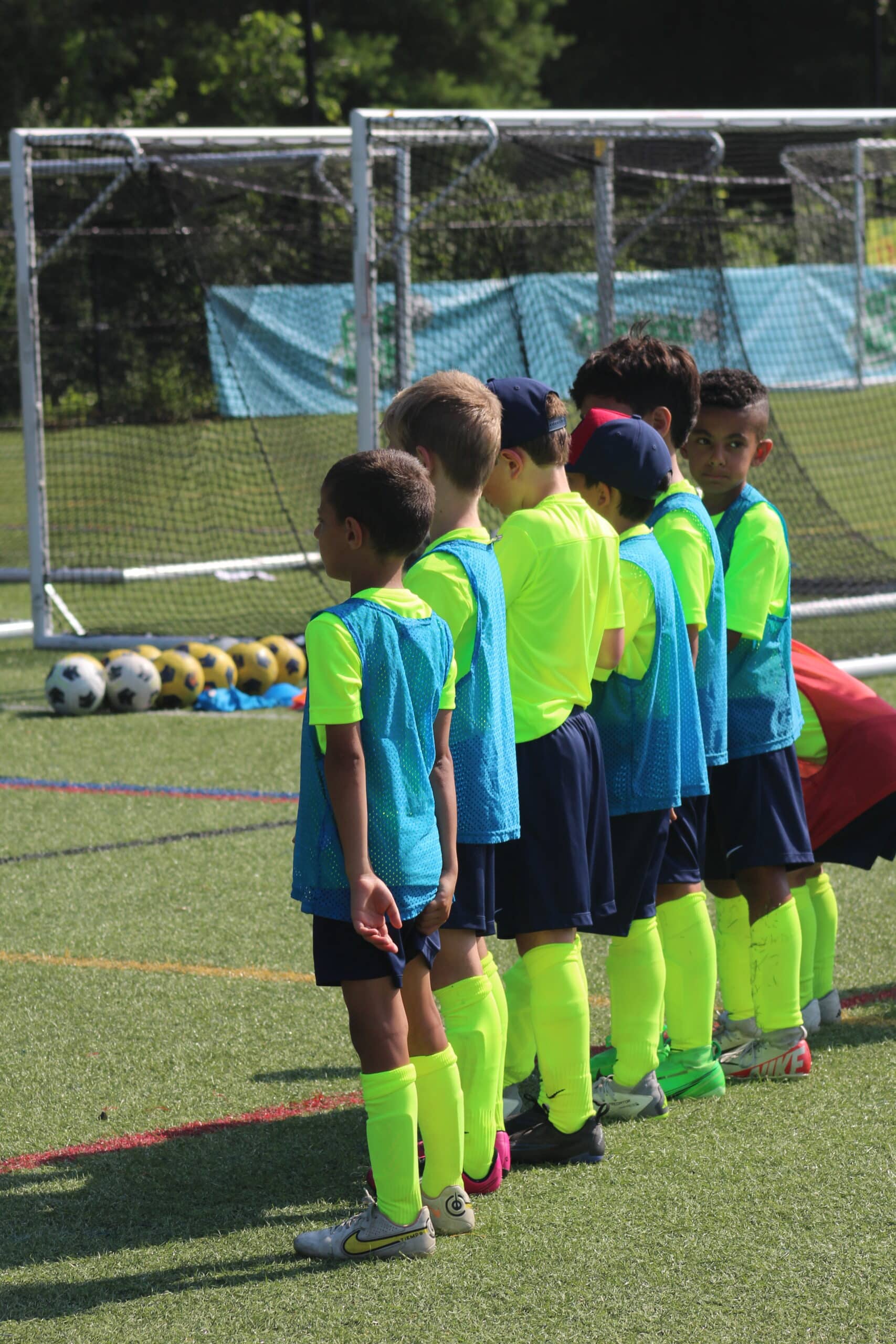
Recover stronger, play better
Recovery is a key part of every athlete’s performance, and understanding how to recover after a soccer game can make all the difference between growth and burnout. Cool-down stretches, proper nutrition, hydration, and sleep: all these habits aren’t just optional—they’re essential for staying fit, preventing injuries, and coming back stronger game after game.
At Barça Academy US, we place a strong emphasis on developing not just technical skills, but also healthy habits off the pitch. Our training philosophy mirrors the Barça methodology, where recovery, discipline, and overall well-being are just as important as ball control or tactics. We teach young players how to recover after a soccer game with the same care and attention as we do for their passing, positioning, or teamwork—because we believe that true performance is built through balance, both physically and mentally.
Would you like to be part of a program that prioritizes holistic player development and follows the world-renowned Barça values? Join now and take your game—and your recovery—to the next level.






